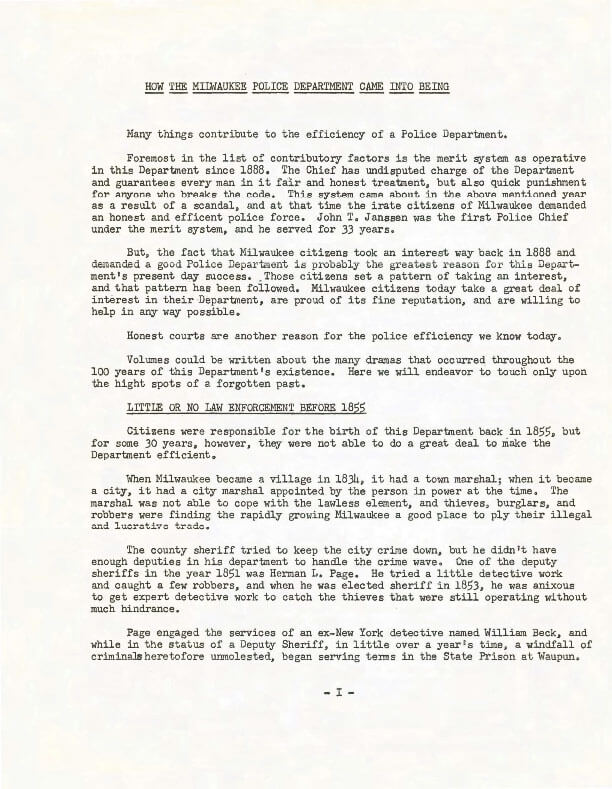Department History
From the Mounted Horse Patrol to the development of the Tactical Enforcement Unit, the files below will brief you on the evolution of the different specialty units and divisions of the Milwaukee Police Department over the years.
Every year since 1944, the Milwaukee Police Department publishes an annual report. Similar to an annual report for a business, these reports outline operating expenses for the department. They also provide a summary of arrests made throughout the year, equipment purchases and personnel changes.
The annual report of 1955, a year which marked the 100th anniversary of the Department, included an overview of the first 100 years of the department. This overview was so well done, we are including it here in its entirety. Save for a few corrections of typos, we have made no changes to the content.
-
 Bomb Squad
Bomb Squad -
Canine Unit
-
 Harbor Patrol Unit
Harbor Patrol Unit -
 Terms from Bygone Days
Terms from Bygone Days -
 Motorcycle Unit
Motorcycle Unit -
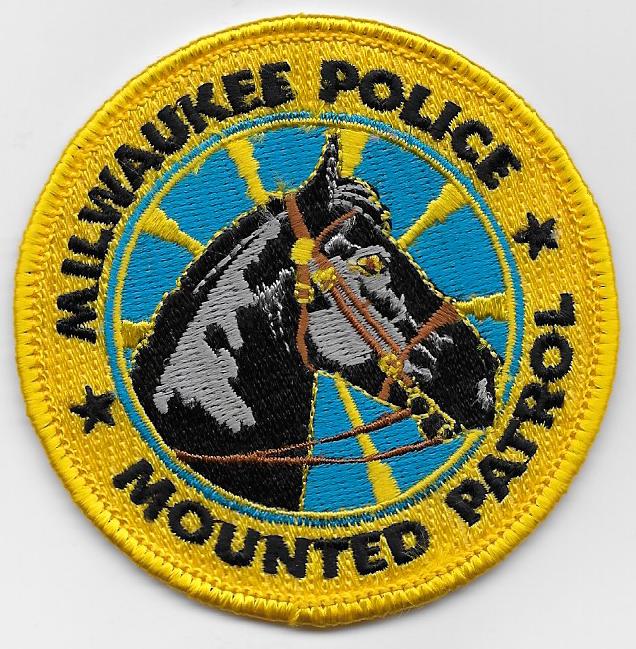 Mounted Patrol Unit
Mounted Patrol Unit -
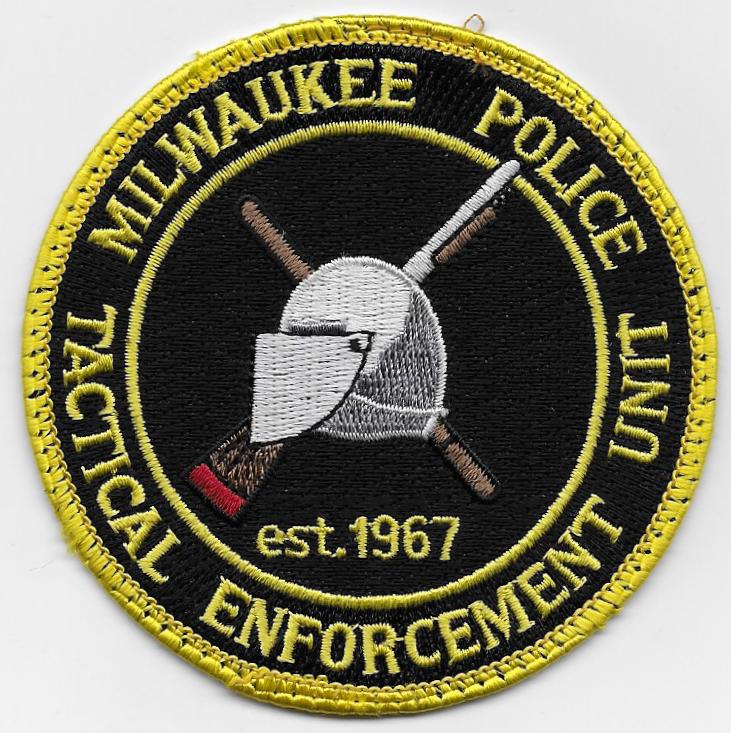 Tactical Squad Unit
Tactical Squad Unit -
 Communications Division
Communications Division -
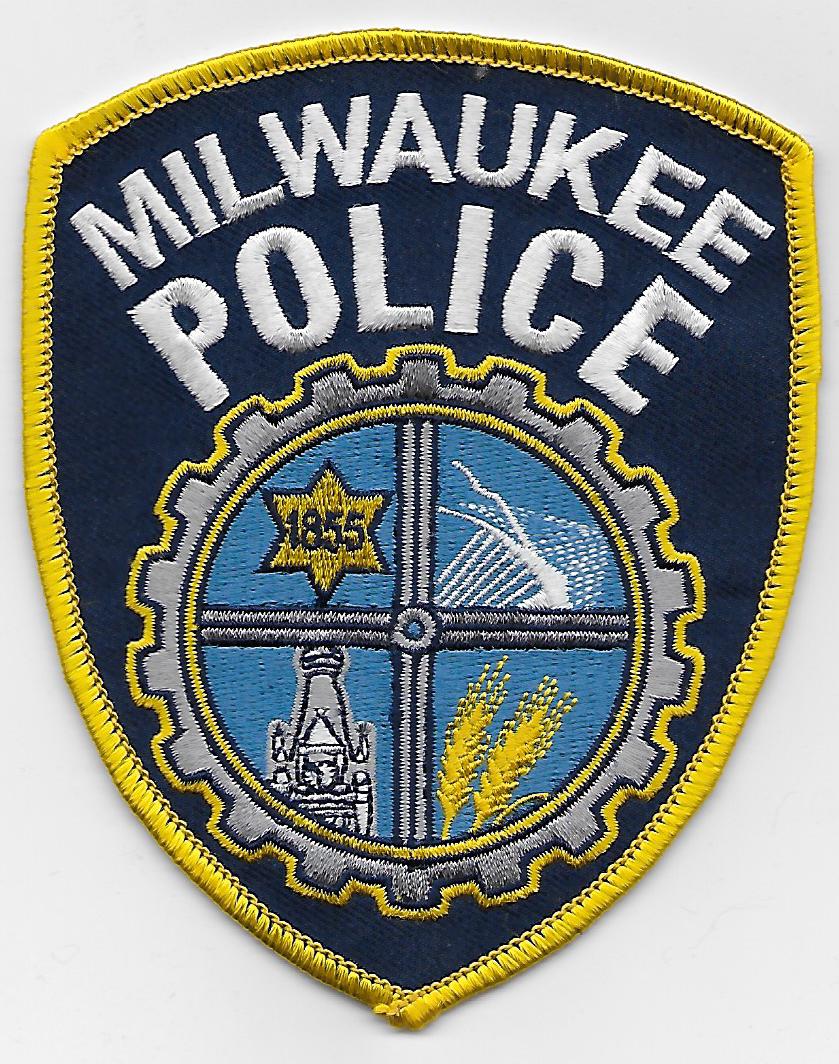 Police Shoulder Patch
Police Shoulder Patch -
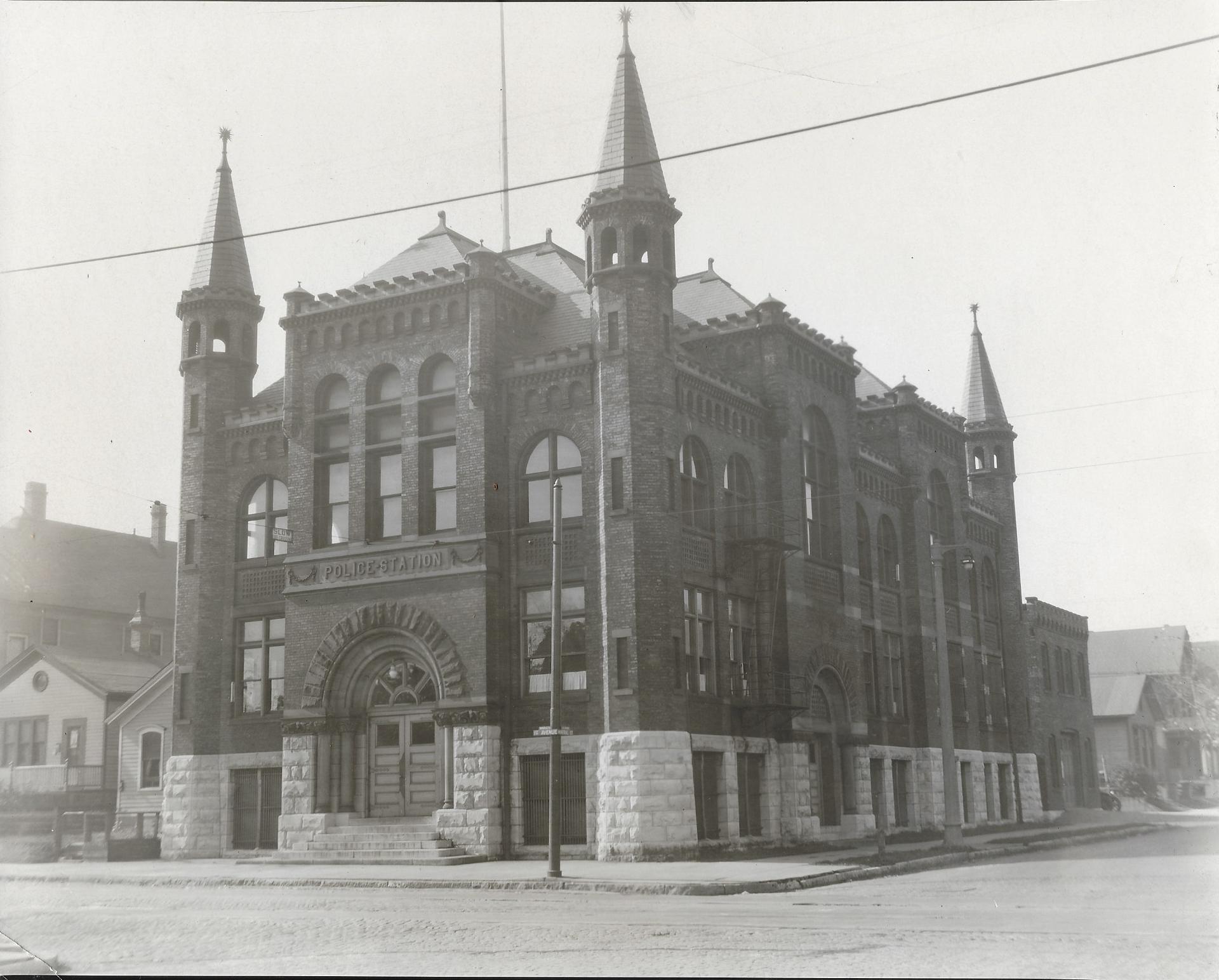 Police Stations
Police Stations -
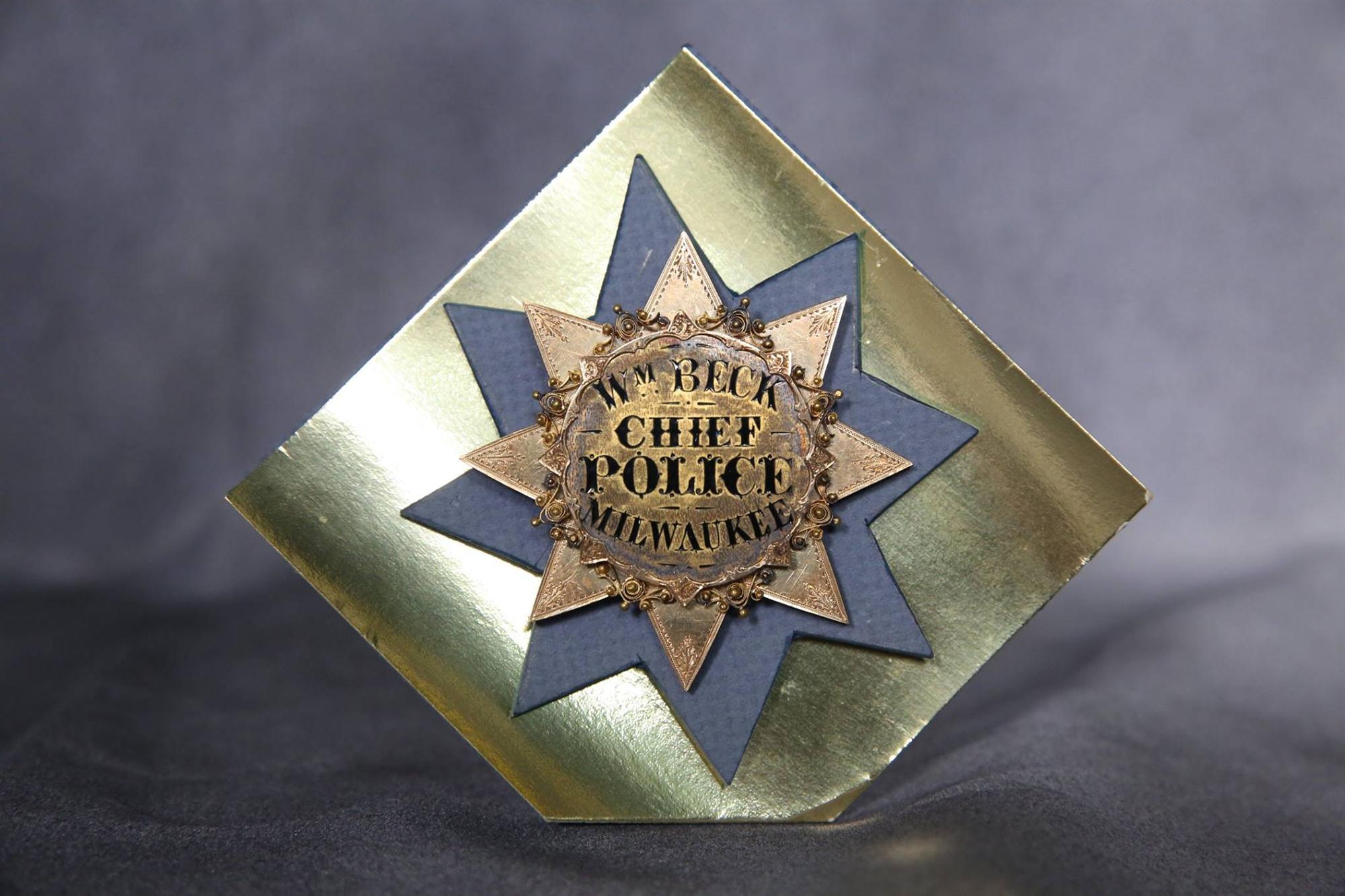 Police Chiefs
Police Chiefs -
 Underwater Investigation Unit
Underwater Investigation Unit
HOW THE MILWAUKEE POLICE DEPARTMENT CAME INTO BEING
Many things contribute to the efficiency of a Police Department.
Foremost in the list of contributory factors is the merit system as operative in this Department since 1888. The Chief has undisputed charge of the Department and guarantees every man in it fair and honest treatment, but also quick punishment for anyone who breaks the code. This system came about in the above mentioned year as a result of a scandal, and at that time the irate citizens of Milwaukee demanded an honest and efficient police force. John T. Janssen was the first Police Chief under the merit system, and he served for 33 years.
But, the fact that Milwaukee citizens took an interest way back in 1888 and demanded a good Police Department is probably the greatest reason for this Department's present day success. Those citizens set a pattern of taking an interest, and that pattern has been followed. Milwaukee citizens today take a great deal of interest in their Department, are proud of its fine reputation, and are willing to help in any way possible.
Honest courts are another reason for the police efficiency we know today.
Volumes could be written about the many dramas that occurred throughout the 100 years of this Department's existence. Here we will endeavor to touch only upon the high spots of a forgotten past.
LITTLE OR NO LAW ENFORCEMENT BEFORE 1855
Citizens were responsible for the birth of this Department back in 1855, but for some 30 years, however, they were not able to do a great deal to make the Department efficient.
When Milwaukee became a village in 1834, it had a town marshal; when it became a city, it had a city marshal appointed by the person in power at the time. The marshal was not able to cope with the lawless element, and thieves, burglars, and robbers were finding the rapidly growing Milwaukee a good place to ply their illegal and lucrative trade.
The county sheriff tried to keep the city crime down, but he didn't have enough deputies in his department to handle the crime wave. One of the deputy sheriffs in the year 1851 was Herman L. Page. He tried a little detective work and caught a few robbers, and when he was elected sheriff in 1853, he was anxious to get expert detective work to catch the thieves that were still operating without much hindrance.
Page engaged the services of an ex-New York detective named William Beck, and while in the status of a Deputy Sheriff, in little over a year’s time, a windfall of criminals heretofore unmolested, began serving terms in the State Prison at Waupun.
The injection of the Sheriff's Office into this historical background is significant, and its connection will be brought out a little later.
THE MILWAUKEE POLICE DEPARTMENT'S UNHAPPY BIRTHDAY ON
OCTOBER 4, 1855
Upon demand of citizen's committees, at a meeting of the Common Council on a Monday evening, September 3, 1855, an ordinance for the creation of a police force was proposed by Alderman Powers. The ordinance was printed in the official papers of the city the next day. There were 13 sections, and one of them made it the duty of the citizens to assist the police when called upon.
Milwaukee, for the most part, took that seriously and interpreted it to mean that the citizens should also help the police whenever they could, without waiting to be called upon.
The ordinance was passed after some amending, and on October 4, 1855, the Milwaukee Police Department began functioning.
CHIEF WILLIAM BECK OCT 4, 1855 TO OCT 14, 1861
WILLIAM BECK, former Deputy Sheriff and hero of Milwaukee's first wholesale criminal roundup, was chosen by Mayor James B. Cross and given the unanimous vote of the Common Council to take office as Milwaukee's first Chief of Police. His salary was set at $800.00 a year.
His complete force was to number six patrolmen, at $480.00 per year. Chief Beck set about hand-picking his patrolmen according to size and fighting ability. To arrest a man in those days it was nearly always necessary to whip him first. The first six policemen in Milwaukee were constantly seen with black eyes, bruised cheeks, and split lips. They earned their $40.00 a month, the hard way. Murders were reduced to practically nothing; thugs quit prowling the streets at night lying in wait for prosperous looking individuals, and citizens began writing letters of praise about the battered and bruised policemen and the fine work they were doing.
Today's history would not be complete without a salute to the memory of the six fathers of the 1,283 patrolmen on duty today. Their names and deeds are inscribed upon the rolls of this Department's records:
- Fred Keppler
- John Hardy
- George Frische
- James Rice
- L. G. Ryan
- David Couglin
STATE RECOGNITION IN 1859
In 1859 the Wisconsin Legislature confirmed the city ordinance that created the Police Department. Headquarters had been moved from the first small office at what is now East Wisconsin Avenue at North Water Street to the new station at North Broadway just north of East Mason Street.
Chief Beck's stormy career, handled with skill and honesty, continued through two incidents of wholesale riot caused by failure of banks to recognize script money, and upon another occasion, a lynching of a Negro accused of stabbing two people. These two sad occasions forced the resignation of Chief Beck, but his retirement from police work was short-lived.
CHIEF W. S. JOHNSON OCTOBER 1861 TO APRIL 1862
Colonel W. S. Johnson was appointed Beck's successor. His tenure was the shortest of any Chiefs, lasting a little more than six months. His reason for resignation was that he did not like the job.
CHIEF HERMAN LE PAGE APRIL 1862 TO APRIL 1863
Herman L. Page was appointed Chief of Police after Johnson's resignation. He was the former sheriff who had called Beck from the farm to help clean up the city as a deputy sheriff in 1853. Chief Page immediately made Beck his First Lieutenant and Peter Smith his Second Lieutenant.
RE-ENTER - CHIEF WILLIAM BECK APRIL 1863 TO APRIL 1879
In 1863 Beck was made Chief again and he served until 1879. Then he was tossed out by a Mayor, newly elected.
CHIEF DANIEL KENNEDY APRIL 17, 1879 TO APRIL 1880
Upon election of Mayor Tom Brown, Chief Kennedy was ousted.
RE-ENTER CHIEF WILLIAM BECK APRIL 20, 1880 TO APRIL 1882
Under Chief Beck's "in and out" tenure had come some semblance of a police force. The next mayorality election closed the career of a colorful character who deserves great credit for launching and fighting for a fine department.
CHIEF ROBERT WASSON APRIL 1882 TO APRIL 1884
Robert Wasson served for two years after the next mayorality election.
CHIEF LEMUEL ELLSWORTH APRIL 26, 1884 TO FEB 16, 1885
Chief Lemuel Ellsworth succeeded Wasson for a short time but left after ugly rumors had been spread about him.
CHIEF FLORIAN J. RIES FEB 18, 1885 TO OCT 9, 1888
Chief Florian Ries took over after Ellsworth's departure serving until 1888.
SPOILS SYSTEM OVERTHROWN
With the termination of Chief Ries’ tenure, public indignation rose to almost uncontrollable proportions. A delegation was sent to Madison late in 1888 demanding that a state law be passed to take the Police and Fire Department out of politics.
Relenting to pressures brought by organizations, the legislature passed a law creating a Police and Fire Commission with net result; the Police Department has been growing in size, power, respect, and efficiency ever since.
CHIEF JOHN T. JANSSEN OCT 26, 1888 TO MAY 5, 1921
The first Chief to serve under the new law, which gave him real authority, was John T. Janssen who has been called the father of the Milwaukee Metropolitan Police Department. He was one of the great American Police Chiefs, and he started gathering honors for the Milwaukee Department soon after he took command.
Janssen was born in Germany on August 14, 1855. With his parents, he came to America at a very early age, and after an adventurous boyhood, joined the Milwaukee Police Department in 1877 when he was 22 years of age. He was promoted from Patrolman to Detective in a short time, and then in two years, to Lieutenant. In 1884, with a change of administration, there was an attempt to reduce him to the rank of Detective. Janssen quit, swearing the Department needed a firm hand and a way out of the hands of politicians.
He entered the service of the Railway, and it was from his railroad position that he was called to become Chief of Police of Milwaukee in 1888 at age 33.
With the beginning of his long reign as Chief (33 years) startling revisions insofar as political influence within the Department were felt. Upon occasions, Mayors, Aldermen, and State Legislators learned quickly that he would brook no interference from them within the Department.
The Milwaukee Police Department rose to great heights. It was during Chief Janssen's term that through his efforts the Wisconsin Chiefs of Police Association was established. Great strides in identification work were made.
Milwaukee won fame under Janssen -- an honest, efficient, Police Chief who trained men to follow in his footsteps. It is significant at this time to note, that everyone who has served as Chief since the Janssen regime, received his training under this great Chief. All have paid homage to Janssen and give thanks for the discipline and training they received.
So it was on May 7, 1921, that due to failing health, Chief Janssen retired, to be succeeded by a man whom he had groomed for 22 years to take his place.
CHIEF JACOB LAUBENHEIMER JR. MAY 27, 1921. TO AUG 23, 1936
Jacob Laubenheimer Jr. began his police career at the age of 19 as a Clerk Stenographer. Police work was not exactly new to him, he had grown up with it. His father, at the time of his appointment to the Department, was a Captain of Police in Milwaukee for many years.
Laubenheimer, the elder, was an Inspector of Police when his son and namesake was made Chief in 1921. Jacob Sr. was one of the finest law enforcement officers in police history. He served actively with the force for 48 years, and was Assistant Chief under his son until a few months before he died at the age of 79.
Under Chief Janssen's tutelage, "Jake” was put through the police school of “hard knocks” having served as a foot patrolman in the roughest sections of Milwaukee and later as a Detective from which rank he was promoted to Chief on May 27, 1921.
Great strides in Identification work were made under his direction as well as an efficient traffic department established. Perhaps, the greatest innovation of Chief Laubenheimer's career was the creation of the Police Training School that became the model of police schools all over the nation.
Captain Cloyd McGuire became the principal of the school, and he continued in that capacity until Hubert E. Dax (present Inspector and Assistant Chief) was put in command in February of 1935. Dax had been assigned as pistol instructor while he still was a sergeant, then, as a lieutenant, had been made the assistant in charge of the school and was put in full command as Captain of Police.
This police school under Dax became world famous and continues to be world famous under Deputy Inspector Raymond Dahl.
While Laubenheimer was Chief, the administration offices were moved from the old Headquarters on North Broadway and East Wells Street to the Safety Building at North Eighth and West State Streets, a part of the Civic Center. The building also housed the Sheriff's Department, the District Attorney's Office, the County Jail, Criminal Courts, the Morgue and a few other county offices.
It was here that Chief Laubenheimer died at his desk, in harness, in 1936.
CHIEF JOSEPH KLUCHESKY AUG 29, 1936 TO JULY 31, 1945
Chief Kluchesky, a career policeman, who got his start under Chief Janssen, was appointed Chief of Police upon the death of Laubenheimer in 1936. The program of motorization of the Department instituted in Laubenheimer’s time, was continued under the direction of this ex-traffic patrolman and Mayor's body guard.
From the rank of Sergeant, Kluchesky was promoted to the post of Superintendent of the Bureau of Identification, wherein he continued until his appointment to the position of Chief of the Department, Kluchesky served until 1945 when he retired on annuity, and for a short time thereafter, he lectured throughout the country on subjects pertaining to better understanding between races.
CHIEF JOHN W. POLCYN, APPOINTED AUGUST 1, 1945
John W. Polcyn was appointed Chief on August 1, 1945, after the sudden resignation of his predecessor. Polcyn, an ex-marine Sergeant, began his career on the Milwaukee Police Department on April 1, 1916, as a patrolman.
In those days, it was mighty difficult to get advancement on the Police Department quickly. He was one of the very few military men on the force, and he not only served as a patrolman, but also trained recruits in regulation drill and helped teach discipline and the kind of neatness as to uniforms that he had been accustomed to in the Marine Corps. He didn't get to enter a competitive examination for promotion until 1923, wherein out of 78 candidates, he came out number one. He was appointed a Sergeant on October 9, 1923, and assigned to traffic duty. Thereafter, he devised a plan whereby utilization of the complete width of Wisconsin Avenue broke a bottleneck traffic jam that had existed for years.
In the summer of 1928, Sergeant Polcyn took a promotional examination for the position of Lieutenant, and placed first in competition with 56 other candidates. He was appointed a Lieutenant, September 5, 1928, and served in several precinct stations until he was appointed Captain in command of the Headquarters precinct, the largest unit of the Department, on November 16, 1934.
On August 1, 1945, John W. Polcyn was appointed Chief of Police by the Fire and Police Commission. Modernization of the Department was immediately stepped up, and a chain of radical and heretofore unknown changes evolved over the period of years.
To name a few:
The establishment of the Youth Aid Bureau whose purpose to this day is to assist in the curbing of delinquency and the training of youths to become better citizens.
Creation of the Personnel Bureau, a place where all ranks can air their difficulties pertaining to the job. (Morale problems have been all but eliminated since organization of this bureau.)
Activation of a Narcotics Squad to curb any attempt to seduce the youth of Milwaukee into the vicious drug habit.
Successfully inaugurating the one-man squad patrols and combination squad and ambulance duty programs. Initiating two-tone colored cars for squad duty.
Due to the heavy increase of motor vehicle registrations in the City of Milwaukee and the lack of off street parking facilities, telephone requests for permission to park vehicles on the streets at night became so heavy as to completely saturate our communication facilities to the extent that emergency calls could not be put through. As a result of this situation, Chief John W. Polcyn created the night parking fee system -- the first of its kind in the United States. Under this plan, motorists who desire to park their cars on the city streets are required to pay a night parking permit fee of $4.00 per month. This system was created on May 1, 1950, and to date over $2,000,000 has been collected in such night parking permit fees. This money has been ear-marked for the construction of off street parking facilities.
Pioneering of the Police Aide Program facilitating apprenticeship for youngsters desiring to become policemen.
Establishment of a Special Intelligence Squad to curb any attempt by organized or syndicated crime from gaining a foothold in this city.
Establishment of a liaison force with the courts, and mutual cooperation extended in allowing stipulated minor traffic cases to be heard at one time eliminating the need of each individual officer testifying.
Formulation of a program of race relations and publication of the booklet "A Guide to Understanding Race and Human Relations” used extensively throughout the nation.
Establishment of a 40-hour week for the personnel of this Department.
These are but a few of the morale lifts that have occurred during the tenure of this foresighted Chief. He has been honored on many occasions in the past, and 17 individual awards by civic, fraternal, religious, and military organizations have been conferred upon him. It is with extreme pride that he recalls the tribute paid the Department, as well as himself, by the United States Senate Crime Commission during their hearings in 1951 at which time he was singled out before an audience of approximately 20,000,000 television viewers and radio listeners as being the outstanding Chief of the foremost Department in the United States. This recognition was paid him and the Department in the personages of U. S. Senator Estes Kefauver, J. Edgar Hoover, Director, Federal Bureau of Investigation, and U. S. Attorney General Clark. Upon another occasion in 1952, Bruce Smith, renowned Director of the Institute of Public Administration, reported in a survey he had been conducting, that the Milwaukee Police Department was the finest Metropolitan Department in the United States.
No single Chief in the history of this Department has done more to perpetuate harmonious relationships between the administrative and enforcement level of this Department.
Chief Polcyn gives Milwaukee’s citizens a great deal of credit for Milwaukee's reputation of being one the best policed cities in the world, and the citizens of Milwaukee give Chief Polcyn a great deal of credit for being a hard-working, clear thinking, ambitious Chief who wants to keep Milwaukee absolutely free from crime and as nearly perfect in police protection as it is possible for a city to be.
***********
This has been only an outline of the history of the world famous Milwaukee Police Department in its first one hundred years. To give the whole history, many books would be needed.
No list of crimes solved has been made here, but during that century there have been thousands of stories of fine, courageous police work, the capturing of desperate men and criminals, handling of riots and troubles, but the greatest boast of the Police Department is not that it catches a lot of criminals, but that it keeps professional criminals out of Milwaukee and prevents crime -- keeps the city a safe community in which to live and bring up a family.
Throughout most of the century, the Milwaukee Police Department has conducted itself in such a manner as to warrant the trust, faith, and confidence of its citizens. As a result, there has been an amazing understanding of police by the citizens, and the citizens have cooperated with the Department in helping to keep Milwaukee a decent, law-abiding community.
- END -
History
Department
The Years
Profile
